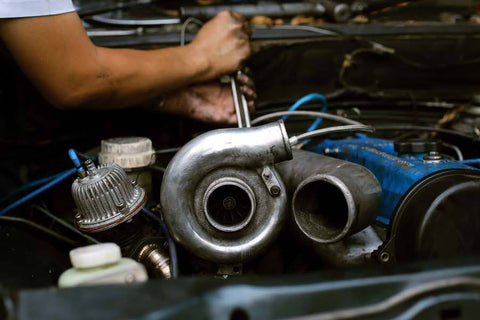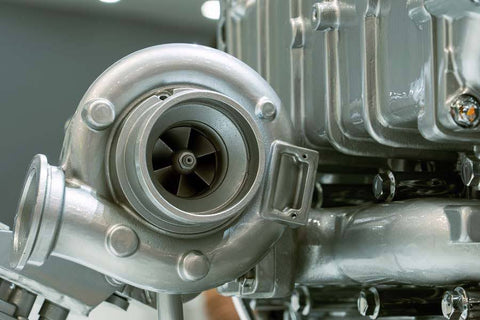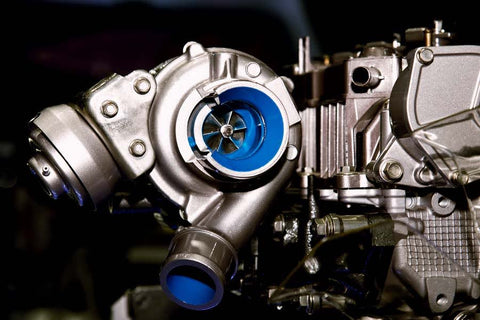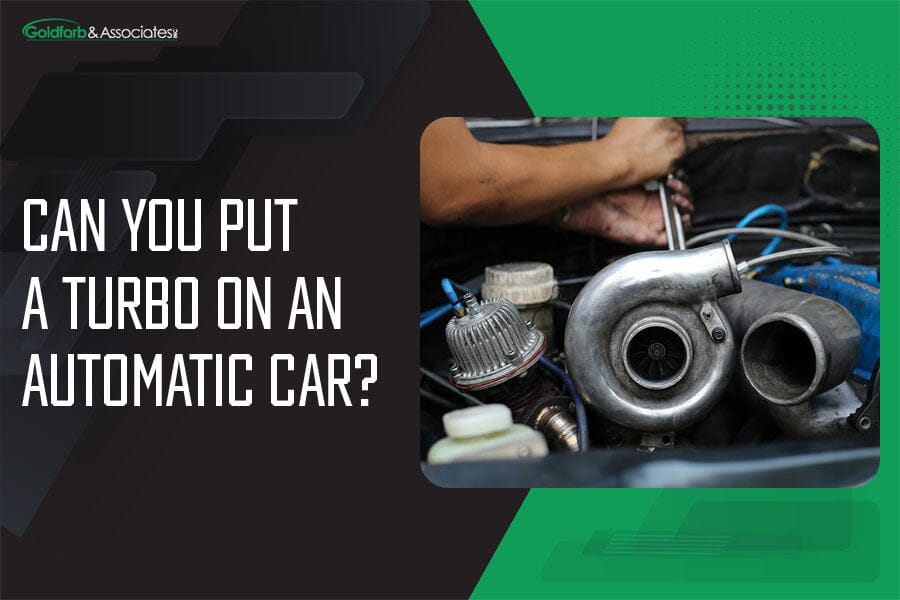Turbocharged engines offer many benefits, such as fuel efficiency, improved performance, and power. You may have seen a turbocharger vehicle with a manual transmission, but can you put a turbo on an automatic car?
If you are an owner of an automatic car who is thinking about adding a turbo to it, this guide is just for you. We will share our expertise about turbocharging an automatic car and give you some insider info. You will be prepared to make the right decision by considering all the pros and cons and having an idea of what parts you will need for your project.

Can You Put a Turbo on An Automatic Car?
Generally looking, installing a turbocharger on an automatic car is possible. More often than not, the type of transmission won’t impose a problem if you are interested in putting a turbo in your car.
Working principles of a turbo on automatic cars
The basic working principles of turbochargers on automatic cars are generally the same as on vehicles with manual transmissions. Long story short, the turbocharger uses the exhaust gases from the engine to produce more power. What happens inside the turbocharger is the following:
- The engine combusts and creates exhaust gases.
- The exhaust gases enter the turbine housing (the hot side) through the turbine inlet port.
- The thermal energy is converted into kinetic energy as the turbine spins.
- The compressor wheel (also known as the cold side) spins at the same speed as the turbine wheel in the turbocharger because they are connected to the same shaft.
- As the compressor wheel turns, it draws air and compresses it.
- Through force induction, the density of the intake air is increased.
- The compressed air is directed to the outlet port, which leads to the engine.
- During the process, a blow valve is used to prevent compressor surge.
The turbocharger allows more compressed air to enter the engine. This increases the fuel intake and power of the vehicle.
Things to Consider Before Putting a Turbo on an Automatic Vehicle
So, can you put a turbo kit on an automatic car? The short answer is yes. But there is more to it.
Before you start looking for turbos for sale, it is important to assess or consult a professional about whether your car can handle the extra power generated by turbochargers. You should start by checking whether it is safe for your engine to add a turbocharger.
For that purpose, it is best to do a compression test and a leak-down test. You should check for any potential weak links in your engine, which might include the following:
- Connecting rods
- Bearings
- Pistons
- Piston rings
- The crankshaft
Next, you should research and see if your automatic transmission is suitable for a turbocharger. To be safe, we recommend looking up the specifications of your transmission power or checking with the transmission manufacturer. It might happen that older vehicles with automatic transmissions are not suitable for turbo, but newer models generally can be turbocharged.
You should do the same for the torque converter. It might need an upgrade or strengthening to accommodate the additional stress caused by the turbocharger.

Source: shutterstock.com / Photo Contributor: Scharfsinn
Is It Worth It to Put a Turbo on an Automatic?
Now that you don’t need to wonder whether you can put a turbo on an automatic transmission, you must know how to assess to see if it is worth it. The best way to do that is to weigh the pros and cons.
We will start by listing the benefits of having a turbocharged automatic car. Some of them are:
- Increased power output without upgrading the engine size
- Higher fuel efficiency
- Excellent performance at high altitudes
- Pollution and emission reduction
But when is it bad to put a turbo on an automatic? You should be aware of several risks before turbocharging a vehicle with automatic transmission.
First, not all automatic transmission systems can handle having a turbocharged engine. The transmission may be damaged or fail if it has trouble keeping up with the engine’s increased power output.
Next, as with vehicles with manual transmission, not all automatic cars are suitable for installing a turbocharger. Some naturally aspirated engines cannot operate with the increased power output the turbocharger offers.
Lastly, you should consider the most common limitations of turbocharged engines. For example, turbo lag, high installation costs, overheating, and the possibility of faster engine wear and tear.
Turbocharging an Automatic Car: Checklist of The Things You Need
Turbocharging is a complex modification, whether it is on a vehicle with a manual or automatic transmission. It requires a lot of skills and, most importantly, adding a bunch of parts. That is:
- A compressor powered by exhaust gas whose job is to force air into the engine.
- An intercooler that will cool the air that enters the engine.
- A by-pass valve to redirect the airflow around the turbine if needed.
- A wastegate to control the flow of the exhaust gases.
- Fuel system including a fuel pump, injectors, and fuel pressure regulator.
Last but not least, you will need a turbocharger. Our advice is to look for an efficient, lightweight turbo with a large turbine and good flow. Ensure it can withstand high temperatures and has enough power to control the amount of exhaust gases.
How to Purchase the Right Turbo
Choosing the right turbo for your car with automatic transmission is one of the most important installation steps. Right from the start, you should know the target horsepower you want to achieve by installing the turbocharger.
Another important consideration is how you will use the car. Will you use the car for drives around the city or generally on the highway?
The best way to determine the proper turbocharge size is to look at a compressor map. By reading the compressor map, you can figure out many characteristics of the compressor, such as:
- Efficiency
- Mass flow range
- Boost pressure capability
- Turbo speed
When looking at different turbochargers, you will notice they have unique specifications. It is crucial to pick a turbo with adequate turbine size, trim, and A/R ratio according to your set power goals and your intent on how you will use the car.
Remember that the turbocharge should match your engine’s capacity and characteristics. When picking a turbocharger for your automatic car, ensure the engine will continue working efficiently.
Ultimately, ensure the turbocharger you have picked is suitable for automatic transmission. It’s best to contact us, and we can explain which turbos are better suited for automatic transmission.

Source: shutterstock.com / Photo Contributor: Guitar Studio
Conclusion
Can you put a turbo on an automatic car? To conclude, the answer is yes. But ensure you consider all the key aspects we went through in this guide to make the right decision.
If you decide to upgrade your car and install a turbocharger, we at Goldfarb & Associates are here to offer you the best new and rebuilt turbochargers, as well as additional parts you will need. Contact us today!



